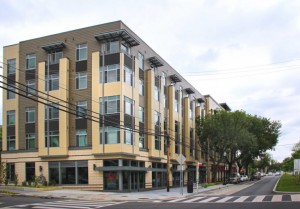About the Lincoln Heights/Richardson Dwellings Neighborhood
Like many of the District’s older communities, the Lincoln Heights neighborhood displays a rich historic charm characterized by a diverse mix of residents, housing styles, open spaces and public facilities. The neighborhood’s close proximity to the Anacostia Waterfront, RFK Stadium, bus lines and an active retail center at Minnesota Avenue and Benning Road contribute to its appeal as a residential choice.
The Lincoln Heights neighborhood is bounded to the south by East Capitol Street, and its northern edge (at Hayes Street) is served by Nannie Helen Burroughs Avenue. To the west, the neighborhood planning area is bounded by 48th Place, with 57th Street as the eastern boundary. The Lincoln Heights neighborhood is a part of the larger Deanwood community.
The history of the neighborhood reflects much of the experience of African-American communities across the country over the last 150 years. In 1863, black Methodists denied access an existing church by Confederate sympathizers, built their own church on the edge of Deanwood. The area has continued to serve the District’s spiritual needs ever since. With the end of the Civil War, free blacks began to settle in the new neighborhoods of Lincolnville, Burrville, Bloomingdale and DePriest Village (now known as Capitol View).
Many of the schools in Lincoln Heights also have long histories. Burrville Elementary opened in 1888. Nannie Helen Burroughs, an accomplished writer and editor who served as President of the Women’s Auxiliary of the National Baptist Convention, secured a charter and the land for the National Training School for Women and Girls in 1907, after being denied a teaching position by the DC Board of Education. The school opened in 1909 and still operates today as a private coeducational school in Lincoln Heights. Kelly Miller Junior High School, the first junior high school in far northeast DC, opened in 1939, and the Emma FG Merritt public school opened in 1943. In 1965, plans were announced for construction of the first high-rise high school in the District, HD Woodson, named in honor of Howard Dilworth Woodson, one of the first licensed African-American architects and civic leaders.
The first HD Woodson High School was built on the former site of the Suburban Gardens, the only amusement park ever located within the District of Columbia city limits. Suburban Gardens opened in 1921, at a time when African-Americans were refused entry to other parks. Suburban Gardens closed in 1961, the same year that the Reverend Martin Luther King Jr. gave a speech in the neighborhood on property near the current Aiton Elementary School and the Lederer Youth Garden and Environment Center.
Lincoln Heights continued to draw national recognition in 1966 when the First Lady, Lady Bird Johnson, kicked off the Keep America Beautiful campaign by planting a wildflower meadow in Watts Branch Park (renamed Marvin Gaye Park in 2006, in honor of the DC born singer-songwriter and musician).
The Strand Theater opened in 1928 to serve the African-American community. The theatre was formerly a 600-seat movie house, dance hall and pool room. The historic theatre served the community for over forty years before closing its doors in 1959.
Today the Lincoln Heights neighborhood is composed of one and two family houses and townhouses of two and three bedrooms. Housing structures are primarily brick faced with simple details that are elevated from the street with front stoops and entrance porches.
The DC Housing Authority owns and operates the Lincoln Heights housing property, and the public housing property a few blocks east, Richardson Dwellings. The two properties total 630 units (there are 440 units of public housing on the Lincoln Heights property and 190 units at Richardson Dwelling). Although the DC Housing Authority vacancy rates are very low for the sites, the developments are over 50 years old and functionally obsolete, a major reason for the redevelopment plans.
